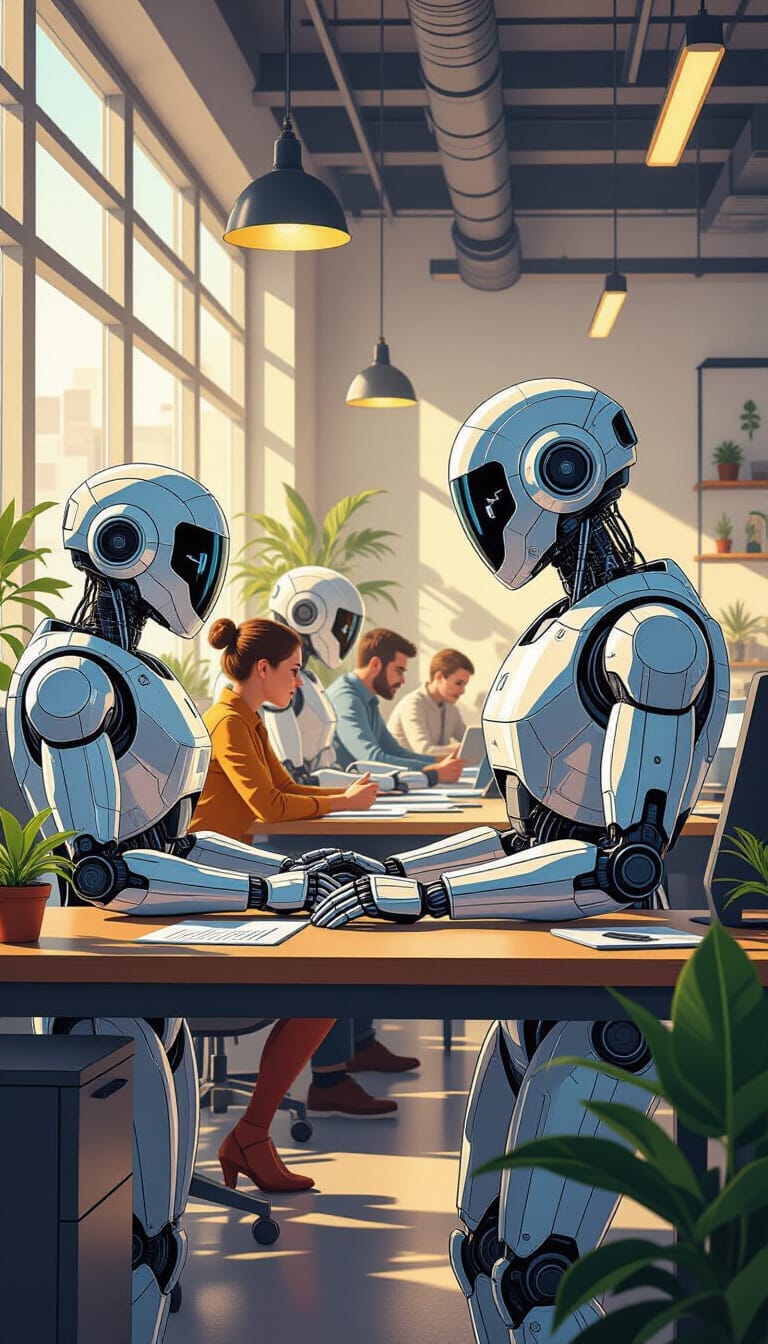There’s a leaked document doing the rounds that should probably worry you more than it does. According to internal papers from Amazon’s robotics division, the company is planning to avoid hiring more than 600,000 American workers over the next decade. Not “might consider it.” Not “exploring options.” Planning it. With spreadsheets, timelines, and cost-benefit analyses that would make an accountant weep with joy.
The goal? Automate 75% of operations. The timeline? Already underway. The savings? $12.6 billion in labour costs between 2025 and 2027 alone.
Welcome to the future. It’s efficient, profitable, and utterly devoid of humans doing the actual work.
What the Leaked Documents Actually Say
Let’s start with what we know from the documents themselves, because the details matter here. Amazon’s robotics team, the people whose entire job is to figure out how to replace you with a machine, has laid out a roadmap that’s both ambitious and chilling in its precision.
By 2027, Amazon expects to avoid hiring more than 160,000 US workers it would otherwise need to accommodate growth. By 2033, that number balloons to over 600,000. This isn’t about firing people en masse tomorrow morning. It’s something arguably more insidious: preventing future jobs from existing in the first place.
The company’s US workforce tripled between 2018 and now, reaching 1.2 million workers. Under normal circumstances, you know, in a world where humans still do things, Amazon would need to keep hiring at that pace to match sales growth. Instead, the robots will pick up the slack. Sales will double. The workforce won’t.
There’s a facility in Shreveport, Louisiana, that’s serving as the blueprint for this automated future. In 2024, it cut staffing needs by 25%. By 2026, they’re aiming to halve them. This isn’t a pilot programme. It’s a proof of concept. And it’s working.
The Orwellian Language Game
Here’s where it gets properly dystopian. Amazon has apparently realised that telling people “we’re automating your job away” doesn’t play well at dinner parties or congressional hearings. So they’ve done what any sensible mega-corporation would do: changed the words.
Internal guidance now instructs employees to avoid terms like “automation” and “AI.” Instead, they’re supposed to say “advanced technology” and, I’m not making this up, ”cobots,” which stands for “collaborative robots.” Because nothing says collaboration like a machine doing your job while you’re retrained for a role that may not exist in five years.
It’s the corporate equivalent of calling redundancy “rightsizing” or “organisational realignment.” The job still disappears. The rent still comes due. But at least the PowerPoint presentation sounds friendly.
The Global Picture: It’s Not Just America
Whilst the 600,000 figure appears specific to the United States, Amazon’s automation ambitions are decidedly international. The company now operates 1 million robots across its global fulfilment network. Three-quarters of all customer orders worldwide are delivered with robot assistance.
In Europe, Amazon invested over €700 million in deploying more than 1,000 robotics systems across fulfilment centres by the end of 2024. In the UK, facilities like the one in Tilbury have seen warehouse worker headcounts drop by nearly 20% since robot integration began.
The pattern is clear: this isn’t an American experiment. It’s a global strategy. The leaked documents might focus on US operations, but the robots aren’t checking passports before they take your job.
Amazon’s Official Response: Nothing to See Here
When confronted with the leaked documents, Amazon did what Amazon does: issued a statement so bland it could be used as a sleep aid. A company spokesman said the documents reflect only one team’s perspective and don’t represent the overall hiring strategy.
Which is technically true in the same way that saying “this is just one oncologist’s opinion” is technically true when multiple doctors are telling you that you have cancer. Yes, it’s one team. It’s also the team whose entire purpose is automation planning. Their perspective might actually matter.
The company has repeatedly insisted that automation creates new jobs whilst eliminating old ones. They point to roles in robotics maintenance, programming, and systems management. And they’re not entirely wrong. The problem is the maths. If you eliminate 600,000 positions and create 60,000 new ones that require specialised training, you haven’t solved unemployment. You’ve created a different problem entirely.
The Efficiency Trap
There’s an argument, often made by people who don’t work in warehouses, that this is simply progress. That automation has always displaced workers, and yet somehow we’ve muddled through. Weavers became factory workers. Factory workers became service workers. Service workers will become... what, exactly?
The difference this time is scale and speed. Previous industrial revolutions happened over generations. People had time to adapt, retrain, shift. This is happening in years, not decades. And the jobs being created don’t map neatly onto the jobs being eliminated.
A 50-year-old warehouse worker in Tilbury can’t simply pivot to robotics engineering because Amazon saved £2 million in labour costs. The skills gap isn’t a gap. It’s a chasm. And we’re expecting individuals to bridge it whilst corporations collect the efficiency dividends.
Amazon will save $12.6 billion between 2025 and 2027. That money doesn’t disappear. It goes to shareholders, executives, and further expansion. It doesn’t go to the communities that built their livelihoods around being the humans in the fulfilment centres.
What Happens Next
The leaked documents aren’t a warning about what might happen. They’re a memo about what is happening. Right now. In Shreveport, Tilbury and fulfilment centres across the globe. The robots are already there. The workforce reductions are already underway. The future arrived quietly, dressed in high-visibility vests and safety protocols.
Amazon isn’t an outlier here. It’s a bellwether. When the world’s most visible logistics company automates 75% of its operations, every other company with a warehouse and a quarterly earnings call is watching. Learning. Planning their own version.
The question isn’t whether this will happen. It’s whether we’ll do anything about the consequences before 600,000 theoretical future jobs become 600,000 actual former workers wondering what comes next.
Because right now? The leaked documents suggest Amazon has a plan for its robots.
I’m not sure anyone has a plan for the humans.
With warmth and solidarity,
Dominus Owen Markham














Wow, the 600,000 jobs avoided is staggering; I'm curious if the spreadsheet models account for human-less productivity longterm, beyond the weeping acountant.
Hello, I hope you’re doing well. I’m a professional artist specializing in comics, NSFW, sci-fi, fantasy, book covers, and character design. I’m looking for commissions..I can help turn your novel into a comic also i work on covers, logos, pages, panels, and also adult works. Can I show you my works?